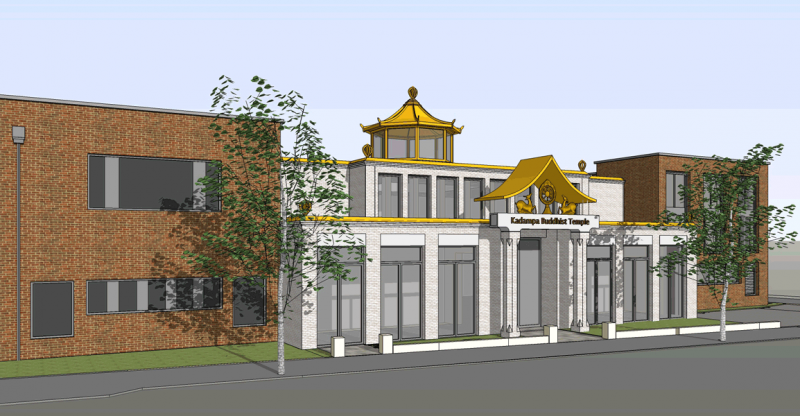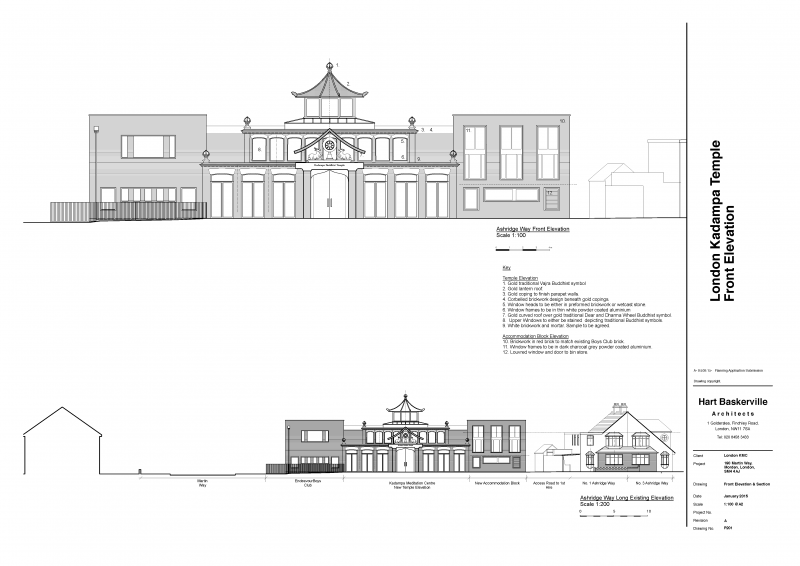Kadampa Meditation Centre London (KMC London) is part of the New Kadampa Tradition, a modern Buddhist charity offering meditation and Buddhist philosophy to busy city people. These designs for the centre’s new temple in Southwest London propose a building that embodies all of the traditional features of a Buddhist temple in a way that sits harmoniously within an ordinary suburban street.
The proposed developments would transform the red brick assembly hall occupying the site into a peaceful and inviting space dedicated to community benefit. With this aim, the design brings the façade of the existing building from dull red to fresh white, in front of which will sit a beautiful and inviting garden to be enjoyed by passers-by and visitors alike.
The main temple building is the principal site for the centre’s programme of meditation classes, talks and prayer sessions. To accommodate this, the plans designate the space of the hall as the main temple, whilst adding an adjoining reception area that allows large groups to gather and socialise whilst preserving the main temple as a sanctuary for peaceful contemplation.
A pleasing symmetry is replicated throughout the temple’s façade, with the entrance lying at the exact mid-point of the three buildings and adorned with the traditional symbols of Deer and Dharma Wheel. The eye is then naturally drawn to the three pairs of golden Vajras at the corners of the two lower rooves and then to the seventh Vajra adorning the lantern roof to form the pinnacle of the temple.
The resultant design is well balanced, with an air of simplicity that naturally emphasises the temple’s special features and allows the temple to sit harmoniously within the neighbourhood.







